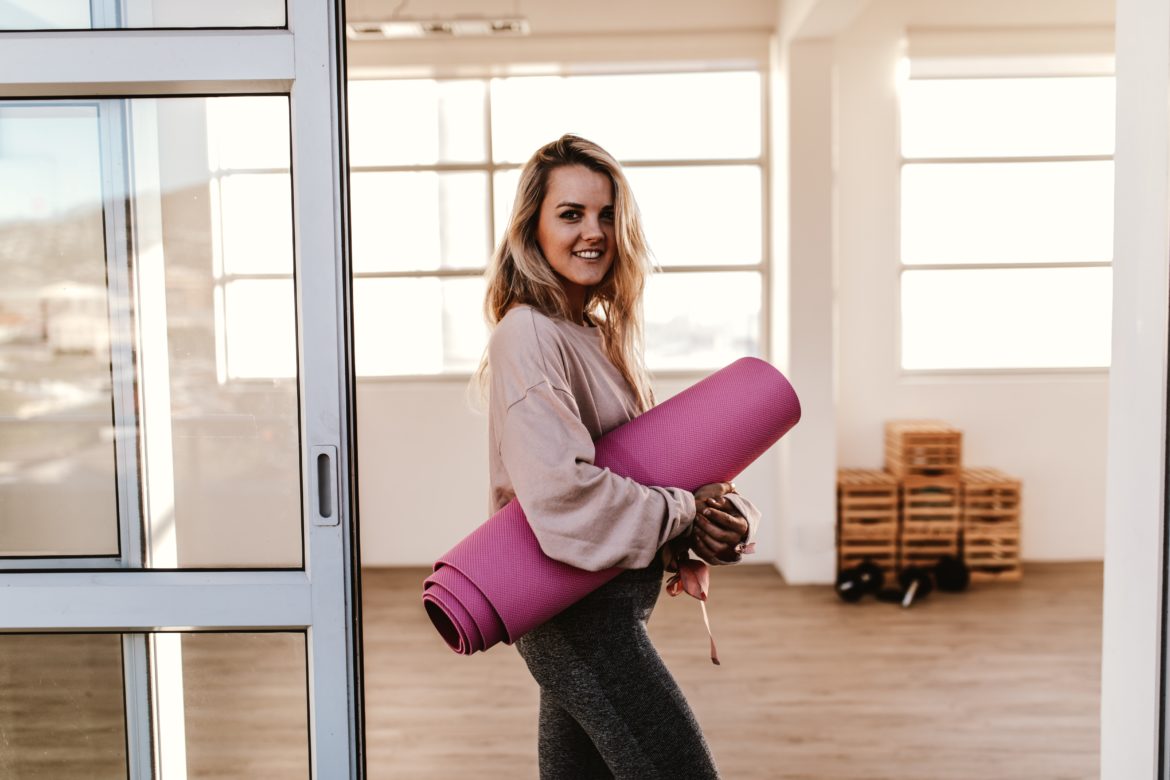The grounding part of a yoga class starts right when the teacher enters the room. It doesn’t start with a yoga pose, but with what a teacher says and does when they close the door and the yoga magic begins. Here are things to consider when preparing the first few minutes of the grounding section of your yoga class.
Introduce Yourself
Even if you’ve been teaching the class for some time and see familiar faces, it’s good to do a short self-introduction and add a sentence or two about the theme of the class, or at least your style.
Here’s one of my favorites from a laid back teacher who lets students modify and play.
My name is __ and I’ll be your guide for this __ minutes. Remember that this is your practice so do what feels right for you. This means you can modify if you need to or increase the intensity if that’s what your body needs. The challenge is to listen to your body.
Student Positions
When introducing yourself and the class, teachers can either have students already in a position, such as child’s pose or lying down on their backs with legs up the wall. However, others choose to establish a group connection first. This usually means sitting in a comfortable position facing the teacher. The teacher sits in front of the class speaking to students and establishing eye contact.
Teachers who opt to establish group connection usually do more than intros. They usually explain the theme of the class, be it philosophy, anatomy, or share a personal story that relates to how yoga works. If you choose this option, beware of how much time you take. Especially for lunch hour yoga sessions.
Teacher: Walk or Stand Still?
If the teacher opts to not sit in front of the class, they can choose to stand or walk around the classroom. When I attended a teacher training, the teacher was very much against walking aimlessly. If you’re going to walk, have a purpose, such as checking student alignment. If you do decide to walk around during the introduction ask yourself, what is the purpose?
There are teachers who lean against the wall or sit behind the class while talking. I have to admit that the energy seems to be really low throughout the class for teachers who do this.
I have also seen teachers who fix the room, such as stacking the blocks, rolling the straps, or cleaning the floor during introductions. This can get distracting. Rolling down the blinds is fine or doing minor room adjustments, but major housekeeping makes the teacher seem unprepared and disconnected. Maybe the problem rests with the studio management more than the teacher, but if you’re a teacher, take note if you find yourself doing this when class starts.
When I attended a teacher training, the teacher was very much against walking aimlessly. If you’re going to walk, have a purpose, such as checking student alignment. If you do decide to walk around during the introduction ask yourself, what is the purpose?
Props, Adjustments, and Etiquette
This is also the time to reiterate to the class the props they are going to need for the class. The teacher either asks students to raise their hands if they need props or tell the students to grab the props now.
Second, students seem to appreciate teachers who ask students if they want to opt out of adjustments. It’s best to do this when students have their eyes closed or can’t see other people, such as in child’s pose or maybe even downward facing dog. You can ask students to raise a hand or lift a leg if they want to opt out.
Third, I attended a class once where the teacher had a short anatomy explanation after introducing himself. He had us sit and he had an anatomy drawing of shoulders posted on the wall. He briefly explained what we were going to work on and how driving can tense up our shoulders. This was a regular yoga class and not a workshop. The teacher kept it short, to the point, and didn’t overwhelm the class with anatomy words. Students seemed to enjoy it. I know I did.
Last, teachers can use this time to remind students to turn off their phones. If there are phones parked in front of mats, remind students to place phones where they can’t be seen. Some students might have their phones out to check time, so teachers can follow up the phone reminder by reassuring students that you’ll notify the class 5 minutes before the official class ends and can leave the class before savasana starts.
Singling Out a Person
There are teachers who single out a person, such as if it’s someone’s birthday and the whole class wishes the person a happy birthday. One time, the teacher announced that someone recently graduated college and we all congratulated her. It works for group cohesion as long as it’s not overdrawn and embarrassing for the person being put on the spotlight.
Type of Studio and Class
The type of studio and class also matters when deciding on an opening style. I used to attend an hour and a half yoga class in a traditional yoga studio. The class started with 10 minutes of chanting. This worked for that studio, but might not work out for some.
Your Personality
After 20 years of taking yoga classes, it’s clear that as soon as a teacher steps into the room, every minute matters. The intro sets the tone for the rest of the class and is an opportunity to let a teacher’s personality shine. Some practitioners prefer laid back teachers and some lean towards teachers who turn the music up and give the class palpable energy. What matters is that you stick to what feels right for you and to keep it fresh. If a teacher looks bored and it feels rote, chances are, students can feel it too.

